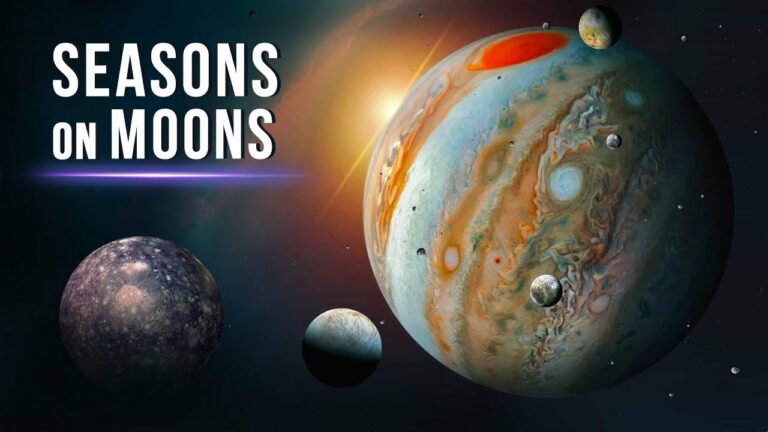What Are The Seasons Like On Other Moons In The Solar System?
Other planets in the solar system besides Earth also experience those annual climate changes that we call seasons. However, the seasons on other planets are obviously very different from the ones we enjoy here on Earth. Nevertheless, the underlying pattern of differentiation is the same for all planets…
Simply put, when a planet is in its orbit with its North Pole facing the Sun, astronomers define the summer solstice as the moment when the Sun reaches its highest point on the horizon and the winter solstice as the moment when it reaches its lowest point.
Several causes contribute to the formation of seasons on a planet: the most important, all other things being equal, is the tilt of the planet’s axis of rotation. On Earth, the 23.5° tilt is the main reason for the climatic differences we observe between summer and winter. Planets with lower inclinations may have smaller variations; planets with higher inclinations may have more extreme variations.
Next in order of importance are the average distance from the Sun and the eccentricity of the orbit. Our orbit is nearly circular, so perihelion and aphelion are not too different, but other planets have much more elliptical orbits (Mercury and partly Mars), so their seasonal variations could be more pronounced. And in general, the variations are more pronounced for planets closer to the Sun.
None of these features, however, could do it alone. Without the presence of an atmosphere, it would all be reduced to a seasonal variation in temperature, without all the weather effects (winds, pressure, precipitation, etc.) that contribute to the formation of a climate.
If the Earth had no atmosphere, it would experience violent temperature changes similar to those on the Moon, making it very difficult to measure the seasonal changes of even a body tilted 23 degrees.
At this point, however, given the title of this video, the question can only be: Do the moons of the solar system show anything like seasons?
On the Moon, the temperature of an illuminated area at the equator is about +130°C, and that of a shaded area is about -150°C.
Skipping Mars and its two tiny satellites, we come directly to the Jovian system, where we cannot help but wonder if the large Galilean moons are somehow affected by the seasons.
Let’s start with the fact that all four of them – Io, Europa, Ganymede, and Callisto –
For example, on Io – the most active world in the Solar System, with hundreds of volcanoes and lava fountains erupting tens of kilometers high – the temperature varies from about -143°C on the illuminated side to about -180°C on the shaded side.
The same goes for Europa, the smallest of the Galilean moons (slightly smaller than our moon, but still the sixth largest in the solar system)
Even Ganymede, the largest moon in the entire Solar System and the only moon with its own magnetic field has to make do with a climate regulated by daily temperature variations ranging from a minimum of -203°C to a maximum of -121°C
The same fate awaits the most distant of the Medicean satellites, Callisto: no seasonal variations and temperatures ranging from -107°C to -192°C between day and night.
Titan is one of the most mysterious moons in our solar system: the second largest after Ganymede
Do not forget to share your opinion with us to provide you with the best posts !




0 Comments